He minhocão It is one of the most recognized landmarks in the city of Sao Paulo, Brazil. It is an elevated avenue that runs through the center of the huge metropolis, weaving through a tight agglomeration of apartment buildings to connect the eastern and western sectors.
The official name of the avenue is Elevado Presidente João Goulart. But the residents prefer to call it by its nickname, the minhocãoalluding to a gigantic worm that crawls through the jungles of South America.
LOOK: The growing number of Ukrainians who do not want to fight for their country in the war against Russia
While dominating the city with its impressive size, he minhocão it is also the place of refuge for a growing number of people.
Beneath the elevated streets, more and more tents are being set up by homeless families, driven from their homes by rising rents and having to sleep outdoors.
Many others have to wrap themselves up in blankets provided by the municipality.
And every day it becomes more difficult with the arrival of winter.
Authorities in Sao Paulo estimate that this year some 34,000 people are sleeping rough on the streets.although calculations by the Federal University of Minas Gerais place the figure at almost 50,000.
The homeless population has skyrocketed by more than 31% since the pandemic, and the number of families on the streets has risen 111% in the same period, according to the municipality.
Faced with this growing number of people who need help, traditional strategies like soup kitchens and shelters are falling short.
So this year, the city authorities came up with a new temporary solution: “microcasas”.
The first micro-house village was built near the banks of the Tiete River, in the Canindé neighborhood.
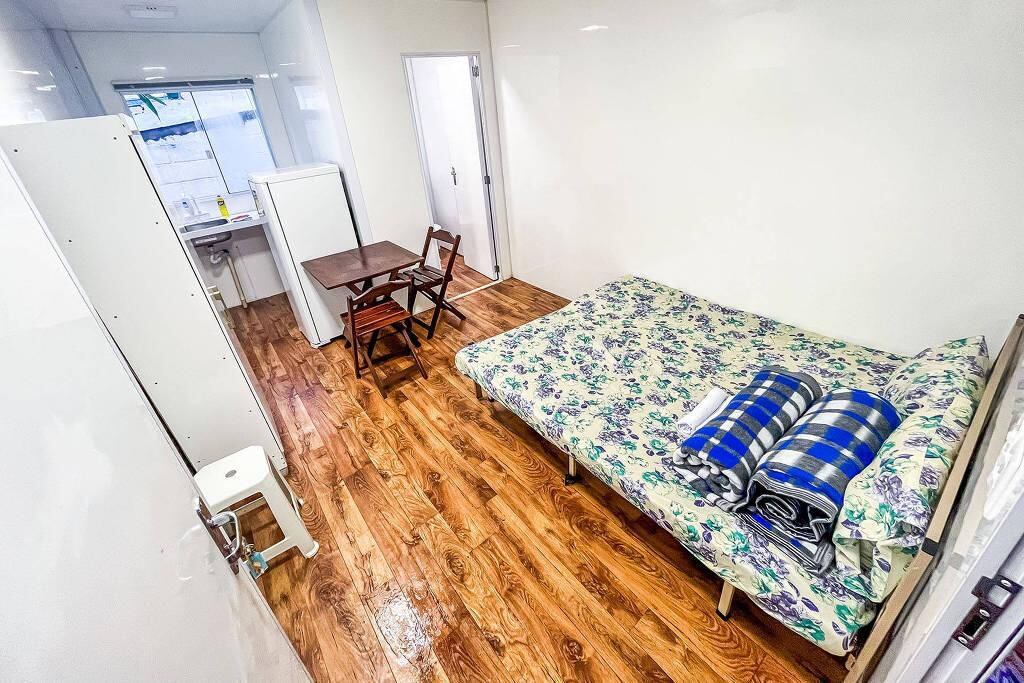
In this place – headquarters of one of the original favelas of Sao Paulo – about 20 families are housed, each one living in small boxes, similar to cargo ship containers, measuring 18 square meters.
A square in the middle with a children’s playground gives the area a communal atmosphere. The children play while their parents watch them sitting on benches.
The goal is to build a total of 1,000 of these houses in different parts of the city by the end of the year.which would house about 4,000 people.
“It is a way of caring for the people based on the recognized international concept Housing First [Vivienda Primero]offering housing as the first step to help them get back on their feet,” explains Carlos Bezerra Junior, welfare secretary of the Sao Paulo City Council, which is in charge of the project.
Daniela Martins, 30, gives me a tour of her tiny house.
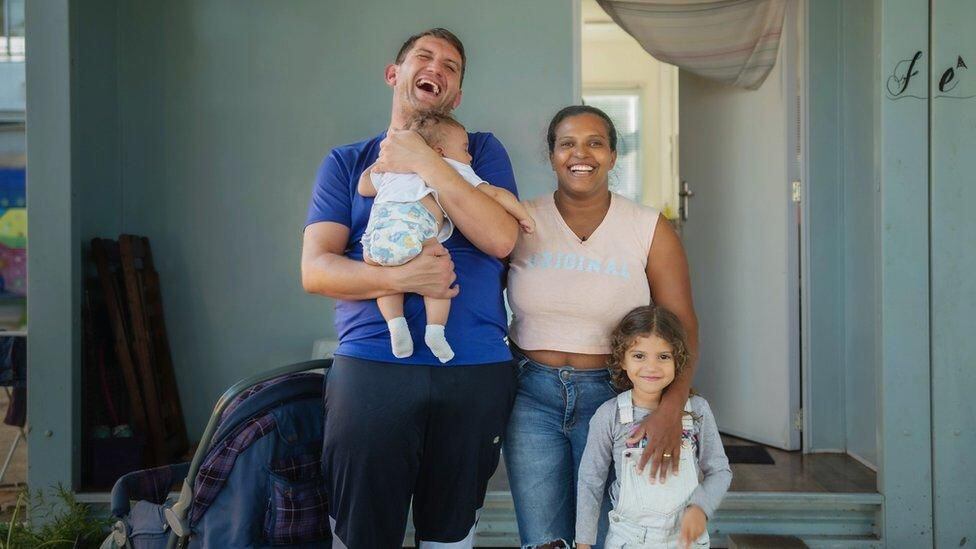
In the space there is a double bed that she shares with her husband, Rafael, 32, and their daughter Sofía, 4. Against the opposite wall, there is a cot for Henri, their 3-month-old baby.
The corner kitchen has a small stove, a dishwasher and a fridge. Next to it is a small bathroom.
The family was hit hard by the covid-19 pandemic. Rafael lost his job as a sales assistant and Daniela’s cleaning job ended.
They lived in a shelter for eight months before this opportunity presented itself.
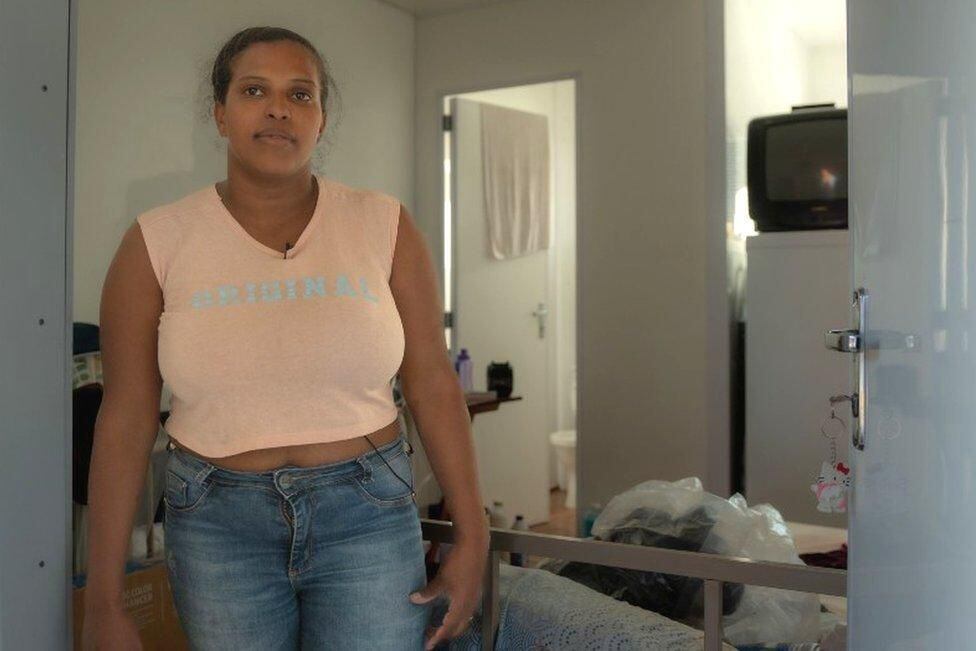
“This is a place from where we try to live in society again, to be human again, you know?” Rafael comments.
“We just want a normal life; so many employers believe that people who live in a shelter are bad.”
The stigma attached to losing one’s home makes recovery much more difficultsay experts from aid organizations.
“Traditionally, those who live on the streets are mostly men with some kind of mental problems and family difficulties,” says Raquel Rolnik, a professor at the Faculty of Architecture and Urban Planning at the University of Sao Paulo.
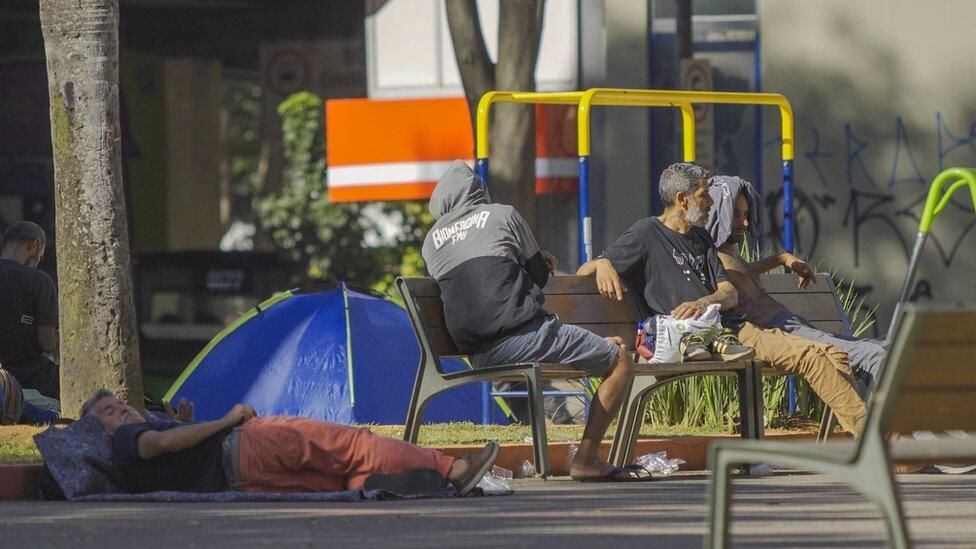
“Now we are talking about entire families living on the street. So clearly the housing issue, the idea that the city administration is mobilizing to address the issue, is good news.”
However, he cautions that Tiny houses are not the perfect solution.
“There is a lot of criticism about the format, the concentration of tiny houses grouped together in the same place, forming ghettos,” he says.
She criticizes the lack of urban planning and believes that better use could be made of existing structures, many abandoned, which can also be made habitable.
Brazil is a country sadly famous for social inequality and huge favelas. but still these less desirable spaces, large areas with makeshift homes built by squatters, have become too expensive for many.
“Of course they are free for the first to arrive, but not for the second, third or tenth,” says Raquel Rolnik.
“They are also based on commercial activities, an activity that provides what the formal market does not supply. And this happens in the context of a total absence of a housing policy”.
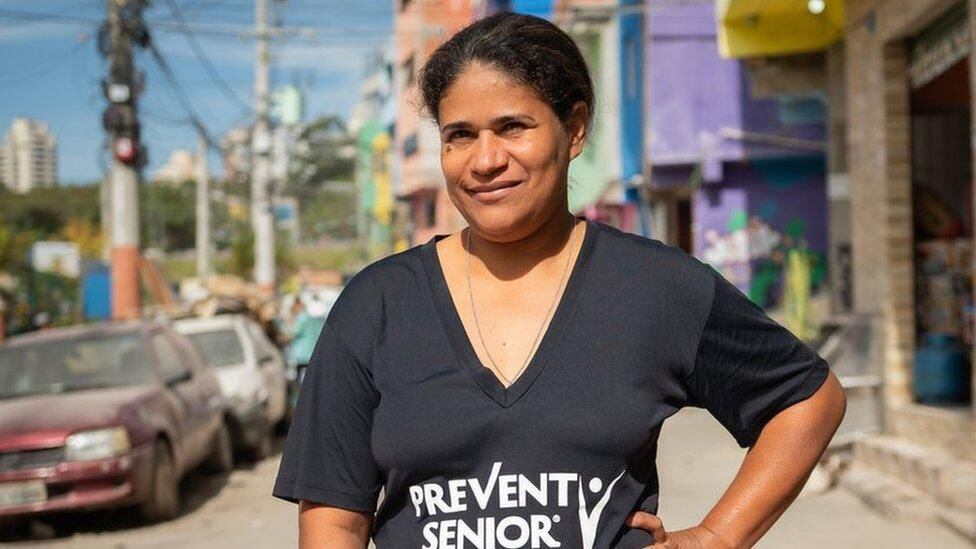
Sao Paulo’s largest favela is Paraisópolis (Paradise City), a name that resident Eliane Carmo da Silva, who lives in a cramped room with mold on the walls, finds ironic.
His house is in a small alley that leads to the main road, on a ground floor with at least two more floors informally built above it.
Elaine and her husband pay the equivalent of US$73 a month for a space that barely fits a double bed, a kitchenette, and a refrigerator.
It is more than they can currently afford. Their granddaughter, Rennylly Victoria, suffers from a heart condition and what little they earn goes into the medicine that keeps her alive..
Although the owner is considerate, it is becoming increasingly difficult for them to get by, even if they receive food and assistance from local charities.
“This month we had to use some of the rent money to buy her medicines,” Eliane said, adding: “I will never let her die.”
And he won’t let his ambitions die either. “Right now, paying the rent means we don’t make ends meet. Without donations, things would be incredibly difficult.“, says.
“My dream is to have my own house, of course, work to earn money and continue to persevere.”
Source: Elcomercio
I am Jack Morton and I work in 24 News Recorder. I mostly cover world news and I have also authored 24 news recorder. I find this work highly interesting and it allows me to keep up with current events happening around the world.

:quality(75)/cloudfront-us-east-1.images.arcpublishing.com/elcomercio/LTAK2DJ5OZEEDA4BLWKTJI27SU.jpg)

:quality(75)/cloudfront-us-east-1.images.arcpublishing.com/elcomercio/URQD6DOQ3BAF5B6G4P4RSVSHBU.jpg)


:quality(75)/cloudfront-us-east-1.images.arcpublishing.com/elcomercio/WRDBVCKZKVACLBKYF4V2QHENXQ.jpg)
